Ravindra Yadav
Learning Speaker-specific Lip-to-Speech Generation
Jun 04, 2022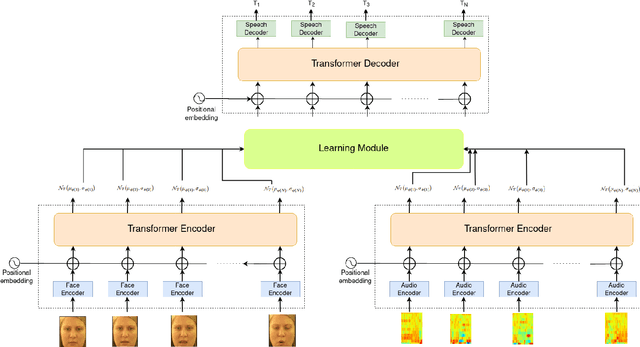
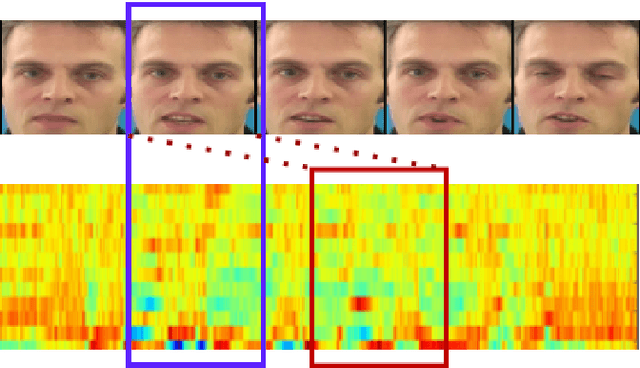
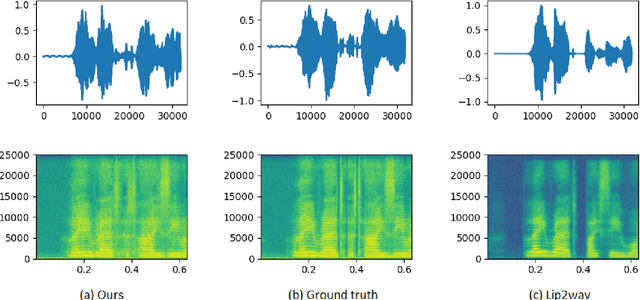
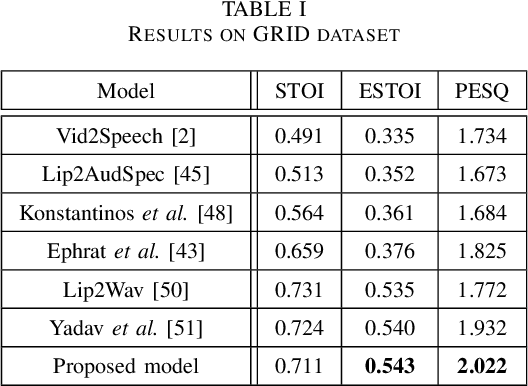
Abstract:Understanding the lip movement and inferring the speech from it is notoriously difficult for the common person. The task of accurate lip-reading gets help from various cues of the speaker and its contextual or environmental setting. Every speaker has a different accent and speaking style, which can be inferred from their visual and speech features. This work aims to understand the correlation/mapping between speech and the sequence of lip movement of individual speakers in an unconstrained and large vocabulary. We model the frame sequence as a prior to the transformer in an auto-encoder setting and learned a joint embedding that exploits temporal properties of both audio and video. We learn temporal synchronization using deep metric learning, which guides the decoder to generate speech in sync with input lip movements. The predictive posterior thus gives us the generated speech in speaker speaking style. We have trained our model on the Grid and Lip2Wav Chemistry lecture dataset to evaluate single speaker natural speech generation tasks from lip movement in an unconstrained natural setting. Extensive evaluation using various qualitative and quantitative metrics with human evaluation also shows that our method outperforms the Lip2Wav Chemistry dataset(large vocabulary in an unconstrained setting) by a good margin across almost all evaluation metrics and marginally outperforms the state-of-the-art on GRID dataset.
Emotion-Controllable Generalized Talking Face Generation
May 02, 2022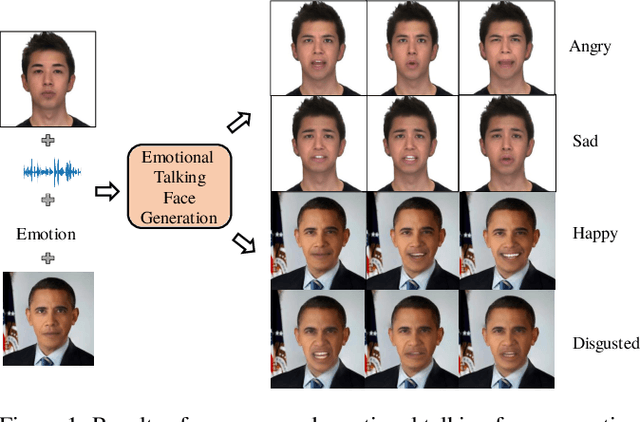



Abstract:Despite the significant progress in recent years, very few of the AI-based talking face generation methods attempt to render natural emotions. Moreover, the scope of the methods is majorly limited to the characteristics of the training dataset, hence they fail to generalize to arbitrary unseen faces. In this paper, we propose a one-shot facial geometry-aware emotional talking face generation method that can generalize to arbitrary faces. We propose a graph convolutional neural network that uses speech content feature, along with an independent emotion input to generate emotion and speech-induced motion on facial geometry-aware landmark representation. This representation is further used in our optical flow-guided texture generation network for producing the texture. We propose a two-branch texture generation network, with motion and texture branches designed to consider the motion and texture content independently. Compared to the previous emotion talking face methods, our method can adapt to arbitrary faces captured in-the-wild by fine-tuning with only a single image of the target identity in neutral emotion.
Stochastic Talking Face Generation Using Latent Distribution Matching
Nov 21, 2020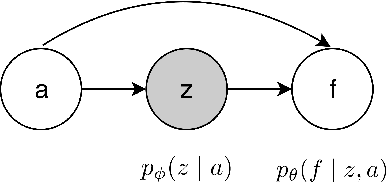
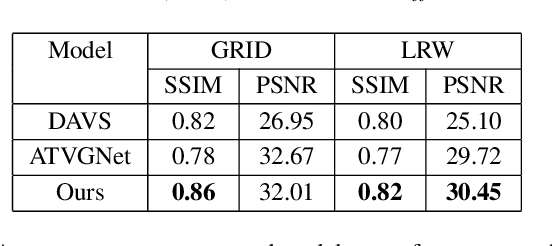
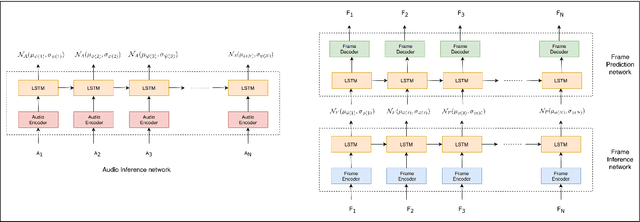
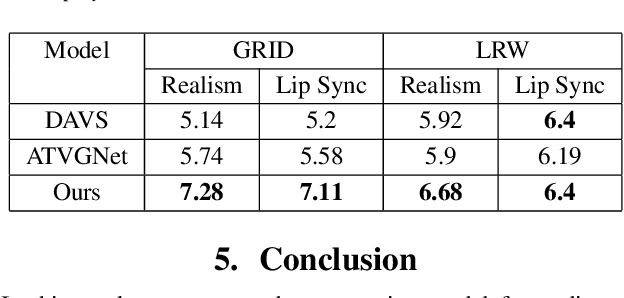
Abstract:The ability to envisage the visual of a talking face based just on hearing a voice is a unique human capability. There have been a number of works that have solved for this ability recently. We differ from these approaches by enabling a variety of talking face generations based on single audio input. Indeed, just having the ability to generate a single talking face would make a system almost robotic in nature. In contrast, our unsupervised stochastic audio-to-video generation model allows for diverse generations from a single audio input. Particularly, we present an unsupervised stochastic audio-to-video generation model that can capture multiple modes of the video distribution. We ensure that all the diverse generations are plausible. We do so through a principled multi-modal variational autoencoder framework. We demonstrate its efficacy on the challenging LRW and GRID datasets and demonstrate performance better than the baseline, while having the ability to generate multiple diverse lip synchronized videos.
Speech Prediction in Silent Videos using Variational Autoencoders
Nov 14, 2020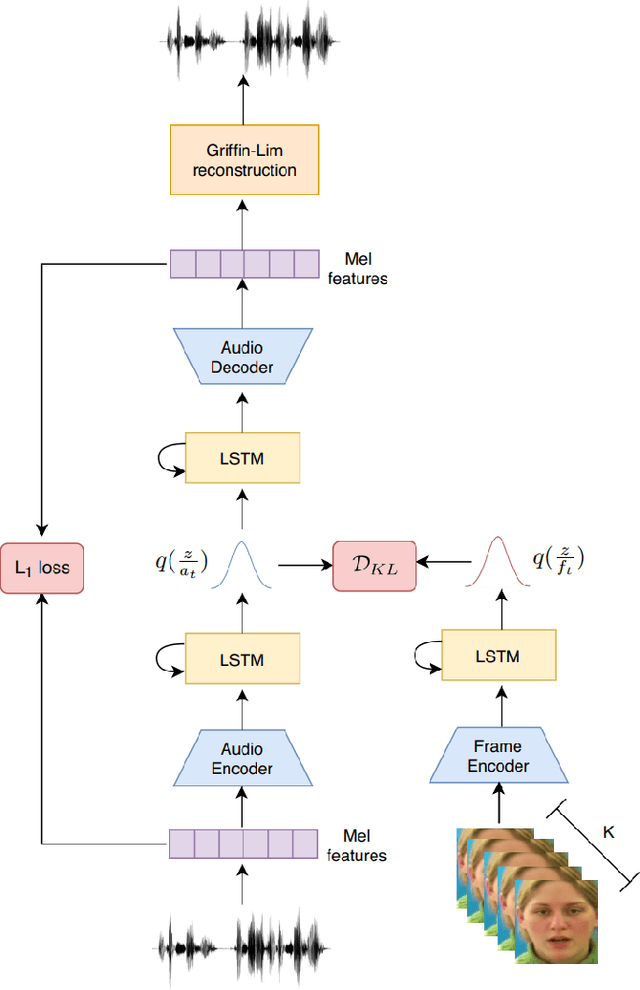
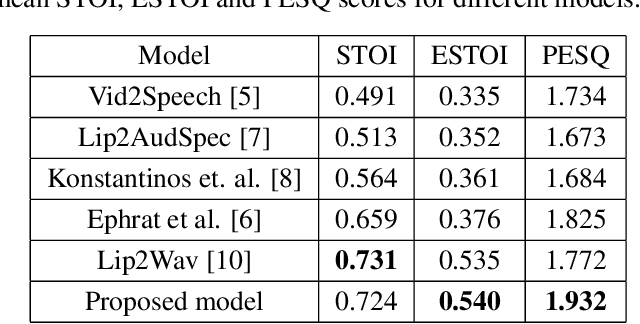
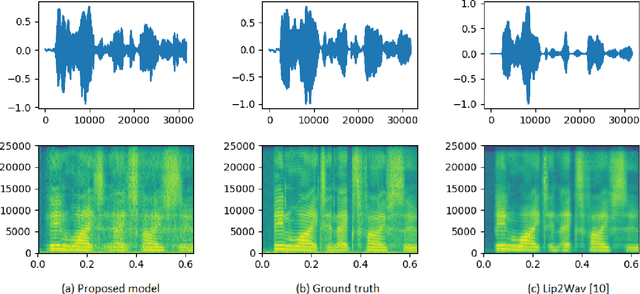
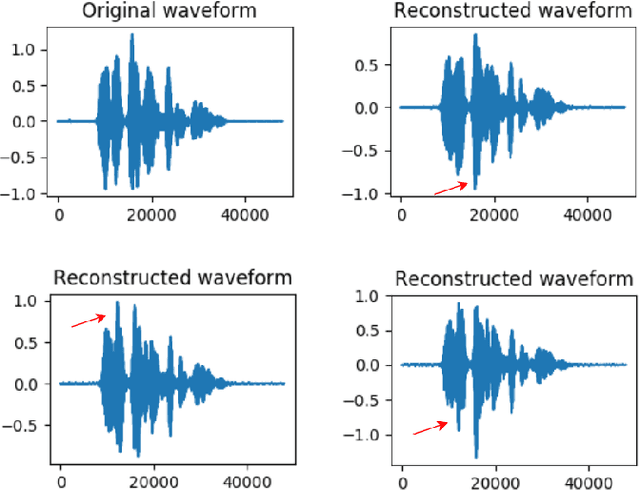
Abstract:Understanding the relationship between the auditory and visual signals is crucial for many different applications ranging from computer-generated imagery (CGI) and video editing automation to assisting people with hearing or visual impairments. However, this is challenging since the distribution of both audio and visual modality is inherently multimodal. Therefore, most of the existing methods ignore the multimodal aspect and assume that there only exists a deterministic one-to-one mapping between the two modalities. It can lead to low-quality predictions as the model collapses to optimizing the average behavior rather than learning the full data distributions. In this paper, we present a stochastic model for generating speech in a silent video. The proposed model combines recurrent neural networks and variational deep generative models to learn the auditory signal's conditional distribution given the visual signal. We demonstrate the performance of our model on the GRID dataset based on standard benchmarks.
 Add to Chrome
Add to Chrome Add to Firefox
Add to Firefox Add to Edge
Add to Edge